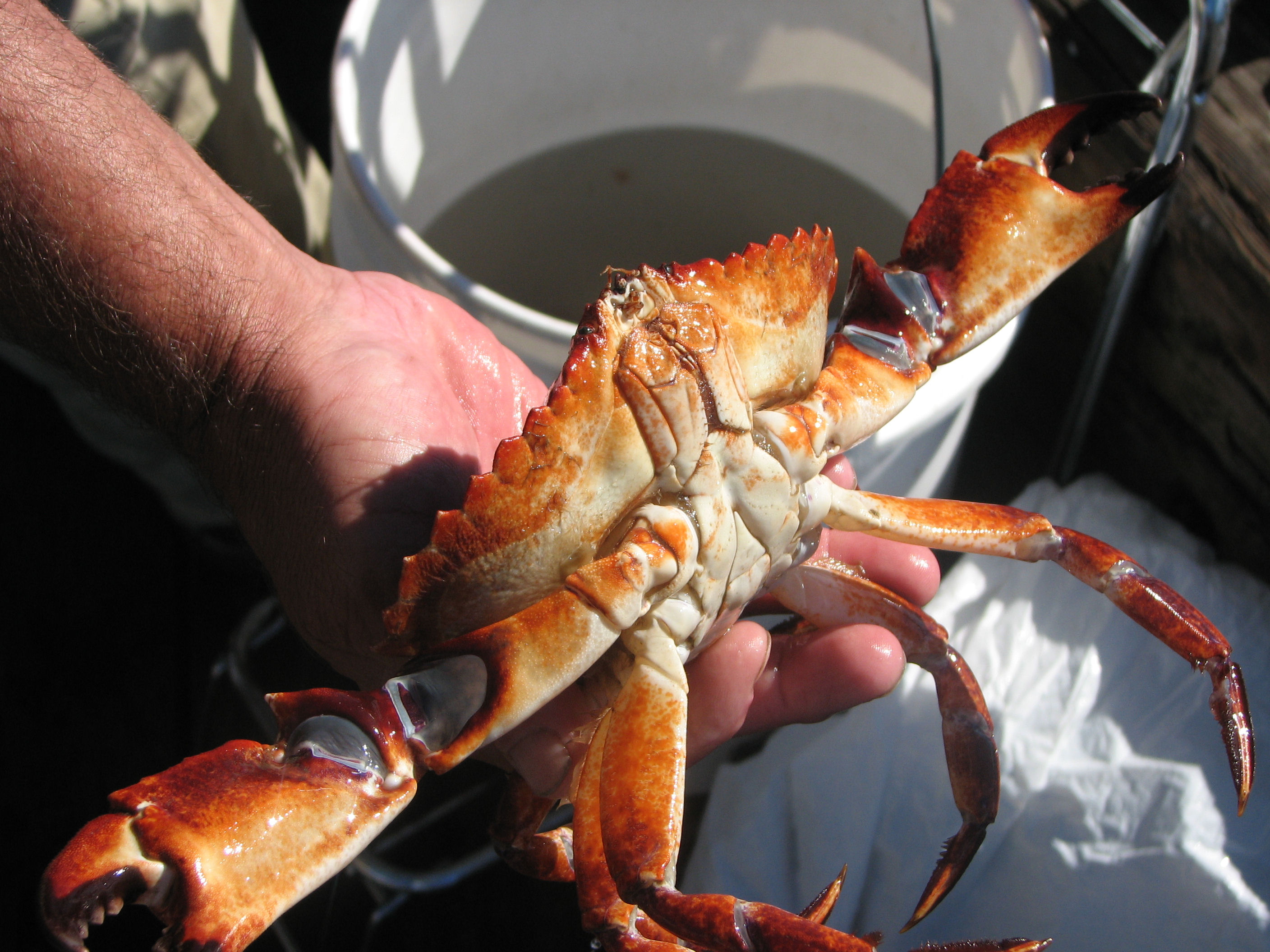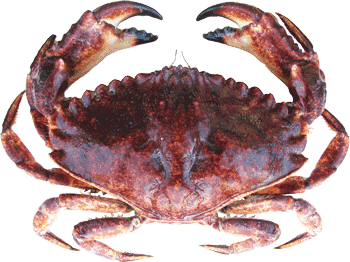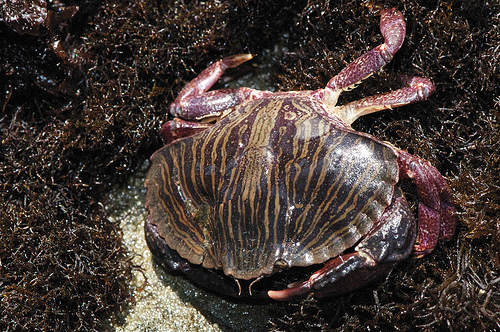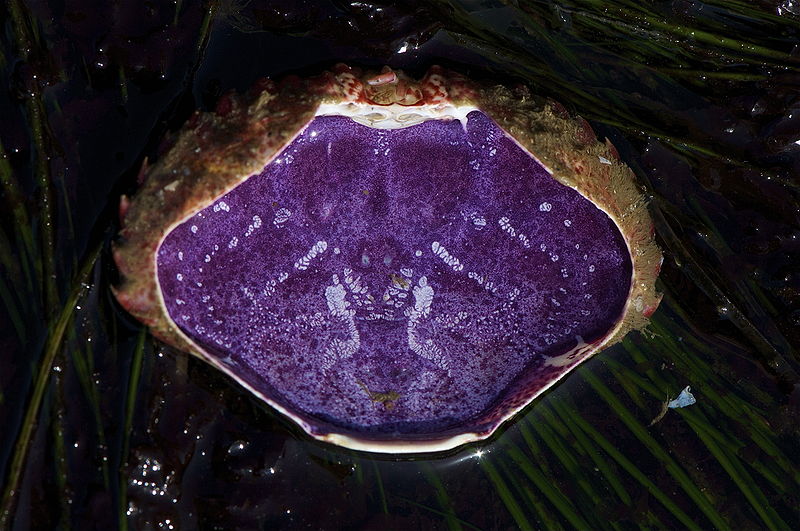Adaptation
The Underside
By looking at the underside of the crab you can
tell the sex of the crab by looking at the underside of the crab. If the
abdomen wide and rounded, the crab is a female. Males have a narrow abdomen.
You can also see the overlapping parts of the mouth that are used for
grasping and biting off chunks of food.
Appendages
All decapods have ten appendages
with different function based on location. The chelae or claws are the first
pair of appendages used for feeding and defense. More on them below. The
other pairs are legs used for walking. The three pairs closest to the mouth
are called maxillipeds and are used in eating. The back pair on the abdomen
are called pleopods. They are used for swimming and carrying developing
eggs.

Claws
One of the first things you will
notice about the red rock crab is their large black tipped claws. Red rock
crabs have very strong crushing claws in order to eat oysters and other
shelled species. Crabs raised on thick-shelled
species developed even stronger claws. One defense mechanism of the Red rock
crab is limb sacrifice. They will give up their claws and other limbs to
escape because they can be shed and regenerated.
The Backside
The large back of the crab is called the
carapace. Red rock crabs have a stalked compound eyes as well as light
sensitive eye spots known as ocelli and antennae on the anterior side of the
carapace. The antennae are chemoreceptors that allow the crab to find food
and mates as well as taste and smell.
The Inside
When you pull the back off a boiled crab, you may
notice the new cuticle forming for the next molt. It has the appearance of
shell, but is soft and fleshy. The inside also contains a yellow mush,
sometimes called crab butter. This is the digestive gland called the
hepatopancreas. It has the same function as the liver and pancreas and is
used for energy storage and the secretion of digestive enzymes.
Gills and Osmoregulation
The gills are important in acquiring Oxygen for
cellular respiration. The gills are found in the center of the body on both
sides in a pair of cavities called the branchial chambers. The gills are
made up of stacks single layered cells called lamellae surrounded by a blood
sinus. The lamellae are connected to blood vessels that travel the length of
the gill. Water is moved through each chamber in an ore-like motion by the scaphognathite along the bottom side of the chamber, up along the gills and
between the lamellae where oxygen is extracted, then forward where it is
expelled out the mouth region.
Red rock crabs need to live in a relatively
constant salinity because they are unable to control their salt
concentration. If the salinity of their habitat changes, salt and water move
in or out through simple diffusion or osmosis. When crabs are in an
isometric medium (same concentration as their body) they neither gain nor
lose water through osmosis and drinking and urination are minimal.
Cardiovascular System
Centered in the crab between the two sets of
gills is the heart connected to the arteries which circulate blood
throughout the body. They have a open circulatory system and their blood is
colored blue due to its copper-based respiratory pigment, hemocyanin.
to learn about nutrition
click here.
To go back home click here.
Your content.
 Red Rock Crab
(Cancer productus)
Red Rock Crab
(Cancer productus)
